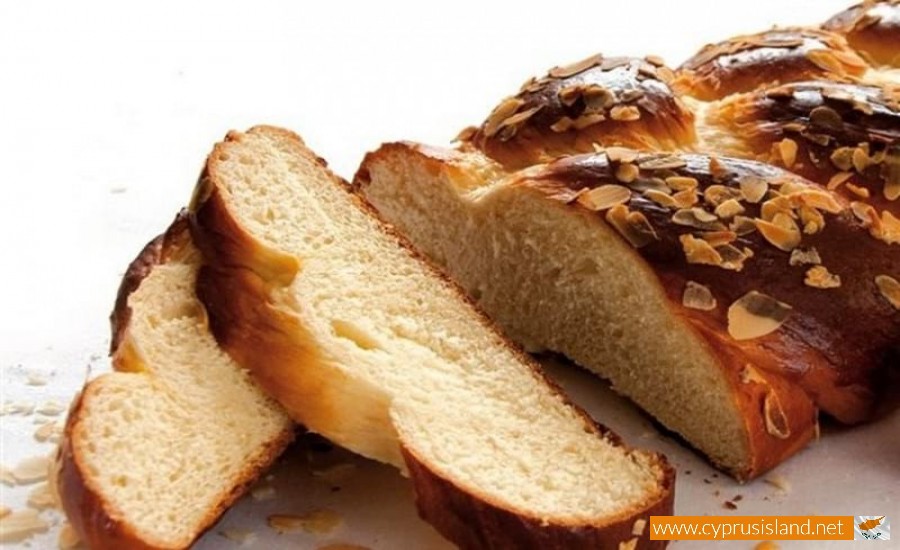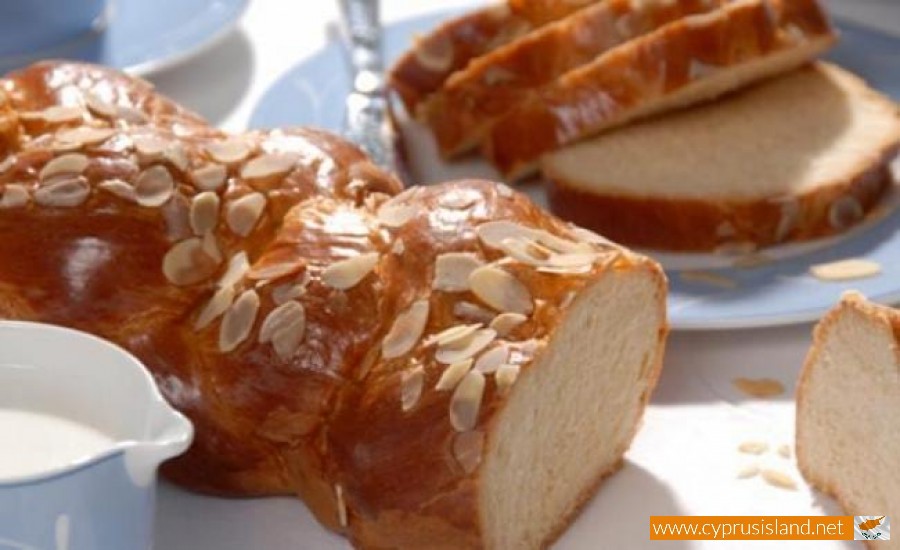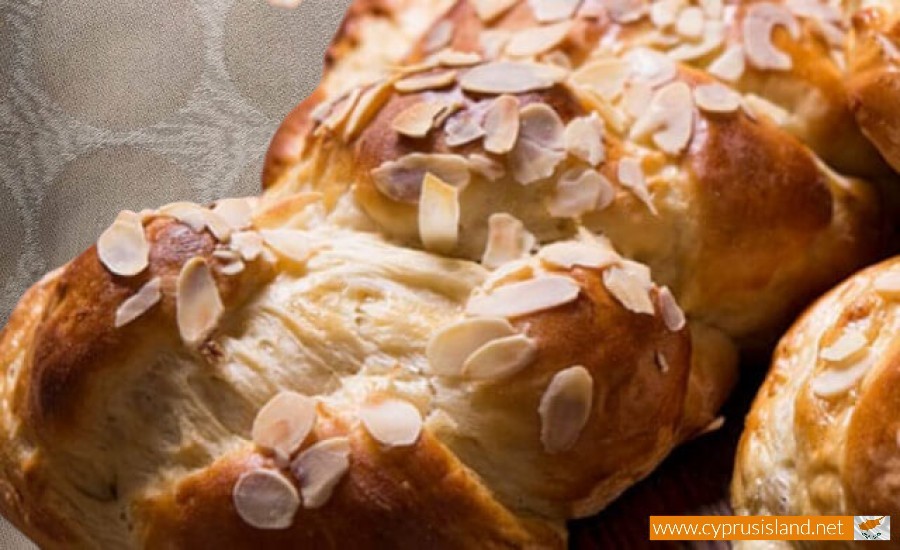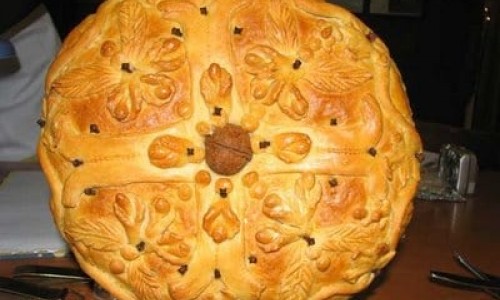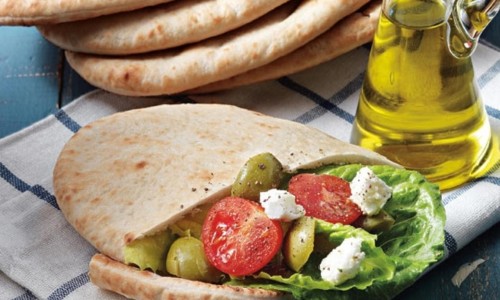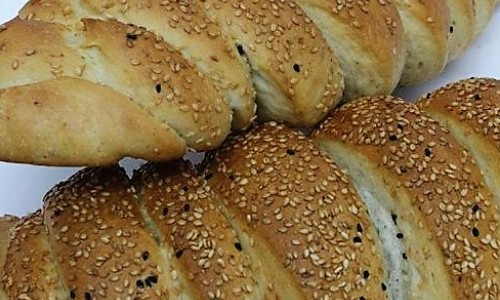Tsoureki
Tsoureki is a beloved Greek sweet bread, traditionally enjoyed during Easter but also relished throughout the year. With its soft, fluffy texture and distinct aromatic flavor, this bread holds a special place in Greek culture and cuisine.
The origins of tsoureki trace back to the Byzantine era, influenced by similar braided breads from neighboring regions. Over time, it became a staple of Greek Easter traditions, symbolizing renewal and rebirth. The braiding of the dough is often interpreted as a representation of the Holy Trinity, and a red-dyed egg, which signifies Christ’s resurrection, is sometimes placed at the center of the loaf.
Tsoureki stands out due to its unique blend of ingredients, which include:
Flour – Provides the structure of the bread.
Yeast – Ensures a light and airy texture.
Eggs and Butter – Add richness and tenderness.
Sugar – Enhances the bread’s sweetness.
Milk – Helps create a soft crumb.
Mahleb and Mastic – These aromatic spices give tsoureki its characteristic flavor. Mahleb is derived from cherry seeds, imparting a subtle almond-like taste, while mastic, a resin from the mastic tree, adds a slight piney, herbal aroma.
Orange Zest – Offers a fresh citrusy note.
The process of making tsoureki requires patience and careful technique. The dough is mixed and kneaded until smooth, then left to rise until doubled in size. It is then divided, braided into the traditional plaited shape, and left to rise again before baking to achieve its signature light and fluffy texture. Once baked, it has a golden-brown crust, sometimes topped with slivered almonds or sesame seeds.
Tsoureki isn’t just a bread; it plays a central role in Greek celebrations, particularly during Easter. As Greece is a predominantly Orthodox Christian country, the bread’s preparation and consumption are deeply tied to religious customs.
During Greek Orthodox Easter, Tsoureki is made to mark the end of Lent. It is customary to break the fast with a slice of this sweet, fragrant bread. Tsoureki is often baked with a red-dyed egg nestled in the center of the loaf, symbolizing Christ’s resurrection. The red egg is a symbol of new life, with its color representing the blood of Christ. Many families will dye the eggs before Easter Sunday, and as they gather around the table, there is a fun tradition of "tsourekivising," where they try to crack each other’s eggs. The last unbroken egg signifies good luck.
Tsoureki is not only enjoyed on Easter Sunday but is also an important part of the entire Holy Week celebrations. It is shared with family, friends, and neighbors, creating a sense of community and togetherness. The scent of freshly baked Tsoureki wafting through homes is as much a part of Easter as the Easter feast itself.
Although Tsoureki is most associated with Easter, it is enjoyed throughout the year, particularly during other Greek holidays, such as Christmas and New Year. Its sweet, comforting flavor makes it perfect for special occasions, but many Greeks also make Tsoureki as a Sunday treat or to share with guests. In fact, it is not uncommon for a host to offer a slice of Tsoureki to visitors, paired with a cup of coffee or tea.
How to Serve Tsoureki
Tsoureki is a versatile bread that can be served in a variety of ways, depending on personal preference and occasion.
As Breakfast: Tsoureki is often served fresh for breakfast, typically paired with a cup of Greek coffee. Some people like to spread a bit of butter or jam on top, while others enjoy it plain, letting the natural sweetness shine.
As a Dessert: With its rich, sweet flavor, Tsoureki makes for a wonderful dessert. It can be served on its own or drizzled with a little honey or powdered sugar. It’s often enjoyed at the end of a festive meal or as a midday treat with a cup of coffee.
As French Toast: Leftover Tsoureki can be transformed into delicious French toast. The soft, fluffy texture absorbs the egg mixture beautifully, making for an indulgent breakfast or brunch dish. You can add cinnamon, honey, or fresh fruit for a truly decadent treat.
In Bread Pudding: Tsoureki is also perfect for bread pudding. Its slight sweetness and soft texture make it an ideal candidate for soaking in a rich custard, creating a dessert that is both comforting and luxurious.
While tsoureki remains a staple in Greek households, variations have emerged over time. Some modern adaptations include chocolate-filled tsoureki, nut-stuffed versions, or even savory takes on the classic recipe. In addition, similar braided sweet breads can be found in other cultures, such as the Jewish challah or Armenian choreg, each with its own unique twist.
Tsoureki is more than just a delicious treat; it is a connection to Greek identity, heritage, and community. The process of making Tsoureki often involves family traditions passed down through generations. Mothers and grandmothers share their recipes with younger generations, ensuring that this beloved bread remains a staple in Greek households.
In many ways, Tsoureki represents the warmth and hospitality that Greece is known for. Whether served at a family gathering or offered to a guest, it embodies the Greek tradition of generosity and the importance of sharing food with loved ones.



